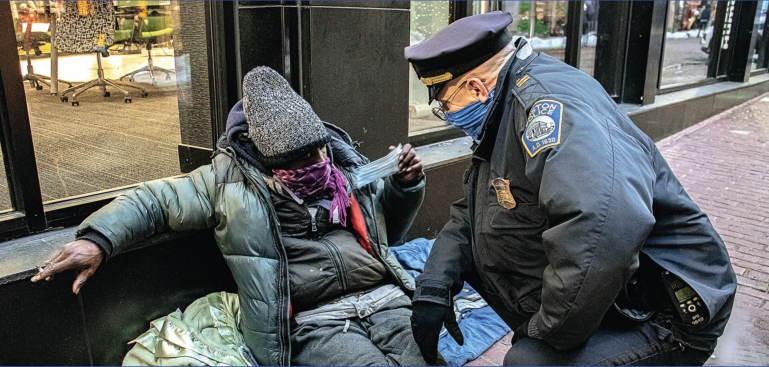
The Neighborhood Association of the Back Bay (NABB) held its fifth forum on homelessness on October 9 to share information on the root causes of homelessness and its increase in Boston in recent years.
The meeting featured speakers from Harvard University’s School of Public Health, the Boston Housing Authority, and the Massachusetts Executive Office of Housing and Livable Communities.
“We were trying to look at it from academic, city, and state perspectives,” said Elisabeth Morris, a co-chair of the NABB’s Homelessness Task Force, which hosted the meeting. “What does each one of these see as a major problem, and how are they attacking this problem?”
Dr.
Howard Koh, a professor at Harvard, said that homelessness was the
major health inequity of current times. He listed risk factors for
homelessness, including the lack of affordable housing, chronic health
conditions or mental health disorders, failure in the justice or foster
care systems and social discrimination.
For
Josh Cuddy, the director of interagency coordination for the state
housing office, however, the biggest factor driving homelessness was the
lack of available homes.
“Between
1960 and 1990, Massachusetts communities permitted almost 900,000
housing units,” Cuddy wrote in his presentation. “Since 1990,
communities have permitted fewer than 490,000 new units.” At the same
time, Massachusetts housing prices have increased more than in any other
state. Cuddy said that there had been record increases in homelessness
in Massachusetts. According to him, homelessness in Boston has increased
by nearly 20 percent when compared to 2023.
In
the Back Bay, homeless people congregate in the subway system or near
the Boston Public Library. “I get my coffee at the Dunkin Donuts on
Boylston Street and Exeter, and there were four people sleeping there
when I went this morning,” Morris said. “A lot of homeless people go to
the library to get warm, so the library now has a big social services
department.”
Morris
said the library was working closely with providers like the Pine Street
Inn, a permanent supportive housing program, to help build trust with
the homeless population and bring individuals to shelters. One such
shelter is 140 Clarendon Street, a recent redevelopment of the YWCA
building that provides over 300 housing units and affordable apartments.
“It’s in our neighborhood in the Back Bay, and we’re in the second
highest cost neighborhood,” said Kathy Young, another co-chair of the
task force. “We’re extremely proud to be contributing to the solution.”
140
Clarendon Street is funded in part by the Boston Housing Authority’s
rental voucher program, which helps minimize housing costs for the
60,000 people living in public or affordable housing throughout the
city. Kenzie Bok, the BHA’s lead administrator, said at the meeting that
she was proud to provide housing to a diverse resident population,
including youth, families, elders and veterans.